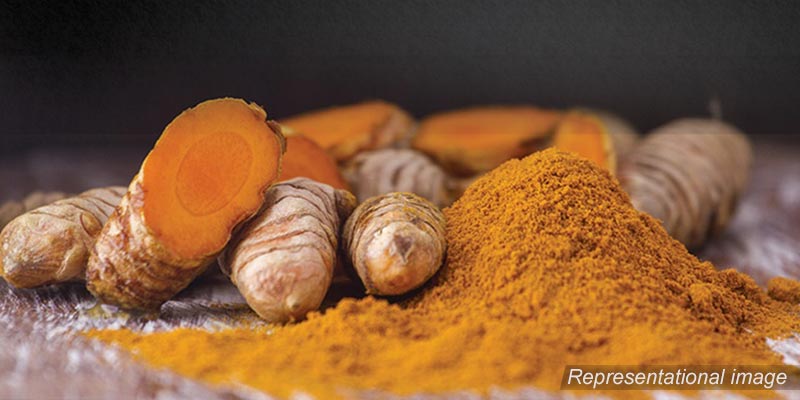- India
- Dec 07
Meghalaya’s Lakadong turmeric gets GI tag
Meghalaya’s Lakadong turmeric has been awarded the Geographical Indication (GI) tag.
Along with Lakadong turmeric, Garo dakmanda textile (traditional dress), Larnai clay pottery and Garo Chubitchi (alcoholic beverage) were also awarded the GI tag.
Lakadong turmeric
• India is the largest producer, consumer and exporter of turmeric in the world. India produces 78 per cent of the world’s turmeric.
• More than 30 varieties of turmeric are grown in India and it is grown in over 20 states in the country. The largest producing states of turmeric are Maharashtra, Telangana, Karnataka and Tamil Nadu.
• Turmeric is a flowering plant of the ginger family. It is a perennial, rhizomatous, herbaceous plant that reaches up to 1 metre in height. Highly branched, yellow to orange in colour that produces cylindrical and aromatic rhizomes, the leaves are alternate and arranged in rows.
• Turmeric (Curcuma longa) is used as spice, herbs, preservative, colouring matter (dye), cosmetics and has a wide range of medicinal and pharmacological applications.
• West Jaintia Hills district of Meghalaya is native to one of the finest varieties of turmeric in the world. The Lakadong variety is indigenous to Meghalaya and is famous for its high curcumin content of about 6.8-7.5 per cent, in comparison to 3 per cent or less in other varieties.
• It is slightly dark in colour compared to any other turmeric varieties found in India. The name of this turmeric variety is derived from the place where it originated.
• The GI tag will help farmers in marketing and give access to customers to the authentic product.
• Around 14,000 farmers from 43 villages of Lakadong area are currently engaged in cultivating the turmeric variety on 1,753 hectares of land.
• Meghalaya government has initiated Mission Lakadong 2018-2023 with the objective of producing 50,000 metric tonnes of the turmeric per annum in five years with a targeted area of 6,070 hectares.
Garo dakmanda textile
• Garo dakmanda textile is a renowned product of the Garo tribes of Meghalaya. It is an ancient craft of the Garo tribal women artisans.
• Dakmanda is a handwoven ankle-length lower garment which is part of the traditional attire of Garo women.
• Weaving in Meghalaya is the most important cottage based eco-friendly industry in the rural areas.
• Dakmanda weaving tradition and culture, producing fine traditional handlooms wrap has gained acceptance and legitimisation across the region of Garo hills of Meghalaya.
• Dakmanda is a traditional wrap around worn on formal occasions like weddings or official engagements.
• It is colorful, lustrous and features bold and elaborate floral patterns.
• It is woven only in acrylic. The threads are stronger and the colours do not fade.
Meghalaya chubitchi
• Chubitchi is a rice-based fermented drink of the Garo community consumed during feasts and ceremonies.
• Meghalaya chubitchi (rice liquor) beverage is paramount to the Garo diet and their culture.
• Its preparation involves using locally available medicinal plants and fermentation in earthern pots. At present, these products are prepared for local consumption only at house-hold level.
Larnai clay pottery
• Larnai clay pottery is made of black clay from Larnai village and the art form has been passed down through generations.
• Larnai is a village in Thadlaskein of West Jaintia Hills district in Meghalaya.
• The earthen pots made here are shaped by hand without the help of a potter’s wheel.
Manorama Yearbook app is now available on Google Play Store and iOS App Store

